A tactical guide to kickstarting your community
An inside look at how we built the Orbit community from zero to one.

Patrick Woods
March 9, 2021
Based on countless chats with other founders and community leaders, I've realized folks have tons of questions about the early days of a community — how to bootstrap early conversations, ways to connect members to each other, and generally go from zero to one.
Theory is great, and I love a good community framework, but sometimes you just want to hear the specifics of what people did. The nuts and bolts, the nitty-gritty details.
So in the spirit of learning in public, here's how we bootstrapped our initial community.
It ain’t perfect, but it’s something, and I hope the specific tactics and details will help others get their community flywheel spinning.
Starting on Slack
Our community started off in a Slack workspace. Today we're on Discord, but using Slack in the early days meant we could get going super quick, without much thought to server config and other complexities.
At the time, we felt like we were solving a million problems at once, since we were building both community and product, and didn’t feel like we had the headspace to also pioneer a nascent community platform.
Slack isn’t perfect, but it’s definitely well understood and simple to spin-up. It reduced the cognitive barrier to us in terms of setup, but also was an easy ask for early members, all of whom already had Slack open and running all day.
By the way, we wrote an in-depth analysis comparing Slack to Discord to Discourse.
Density drives destiny
Starting on Slack, we had only 2 channels at first: #general and #feedback. Feedback was mostly bug reports and feature requests, whereas general was, well, general conversation.
At the start, having just two channels was fantastic. First, it reduced the community ghost town effect by concentrating all activity into those two places.
Density is crucial in the early stage of building a community, so I think it’s important to reduce the surface area for interactions on whatever platform you choose.
Second, it meant Team Orbit only had two channels to pay attention to. We were a three-person team all of 2020, so it seemed important to limit the number of things to monitor and engage with.
I get it — It’s tempting to create lots of fun channels in a new Slack or Discord, but in the early stages, density is destiny, so work to concentrate your conversations.
Today, though, our Slack Integration and Slack App make it much easier to engage and measure growth of Slack communities, and I wish we'd had them when we were first getting started.
Build with the community to get the flywheel spinning
Not only were we getting our community off the ground — we were building the very first version of the Orbit product at the same time, and we didn’t have much to show for either, except for a handful of engaged early adopters.
Our early community members were folks who were excited about the Orbit Model, interested in better tooling for DevRel and community, and were willing to try almost anything to make them more effective at delivering great experiences to their community members.
Our community members were — and still are — some of the best minds in DevRel and community, and we wanted to demonstrate how seriously we took their input and feedback.
For most of 2020, Josh, Nicolas, and I were active in Slack pretty much every day, responding to every single product-related question or concern.
We got in the habit of shipping feature requests and bug fixes quickly — often the very same day.
This delivery cadence helped us build credibility with the community and confidence that we may indeed be able to deliver on all the concepts and wireframes we were sharing.
Not only were these conversations pivotal in the development of the product, our quick turnaround on requests incentivized folks to share their ideas or challenges as well, knowing that the core team would quickly respond and address their situation.
The frequency of conversations, in turn, lowered the barrier of entry for new community members, and generally made things feel vibrant and active, all of which are encouraging outcomes for a new community.
We created a virtuous cycle, in which a community member's feedback led to a response from our team plus a fast fix for their problem, which led to more confidence from our community, leading to more conversations in Slack from existing and new members and more people sharing ideas and feedback.
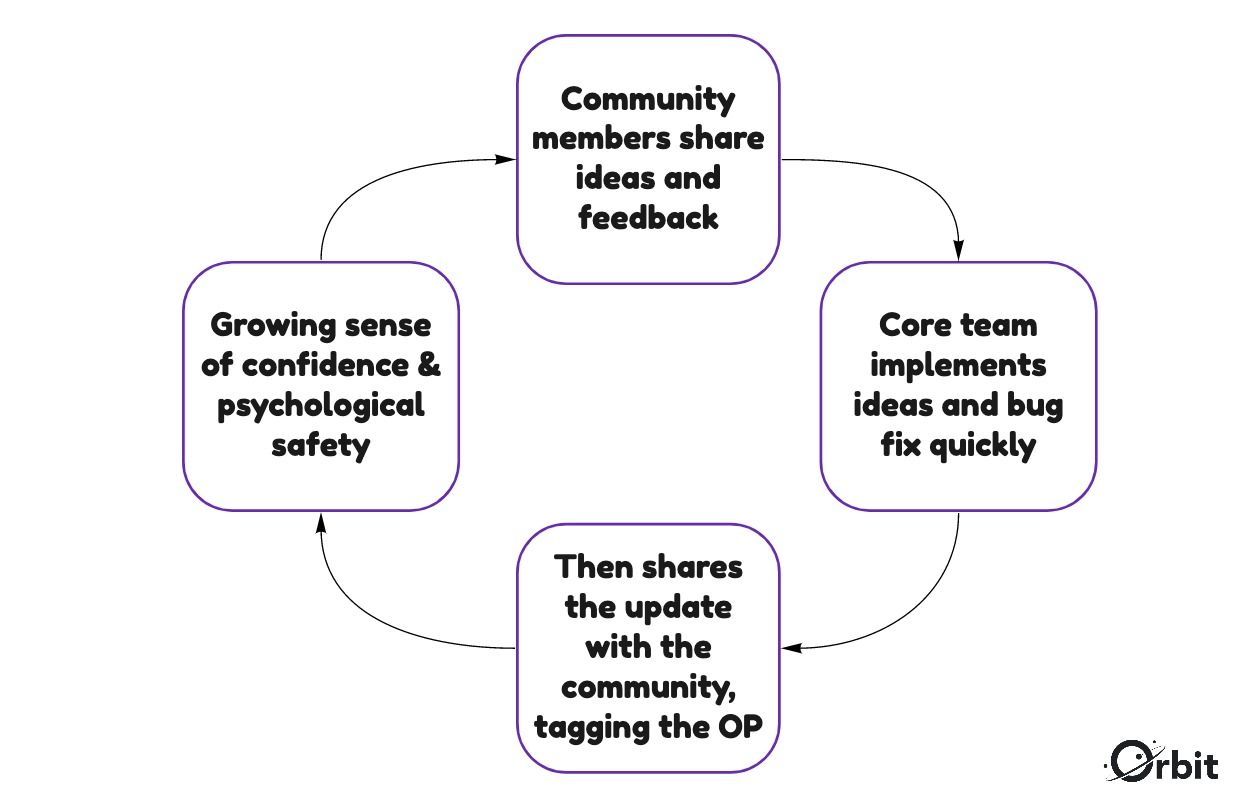
After a few months of consistent shipping, we sensed a transition in vibe from casual conversations and higher-level “what if” discussions about what Orbit could do in theory, to how folks were using Orbit daily in practice.
This marked the start of a shift from a casual community to collaborator community.
You can actually see the increase in members later in 2020 as both the community and our product picked up velocity:
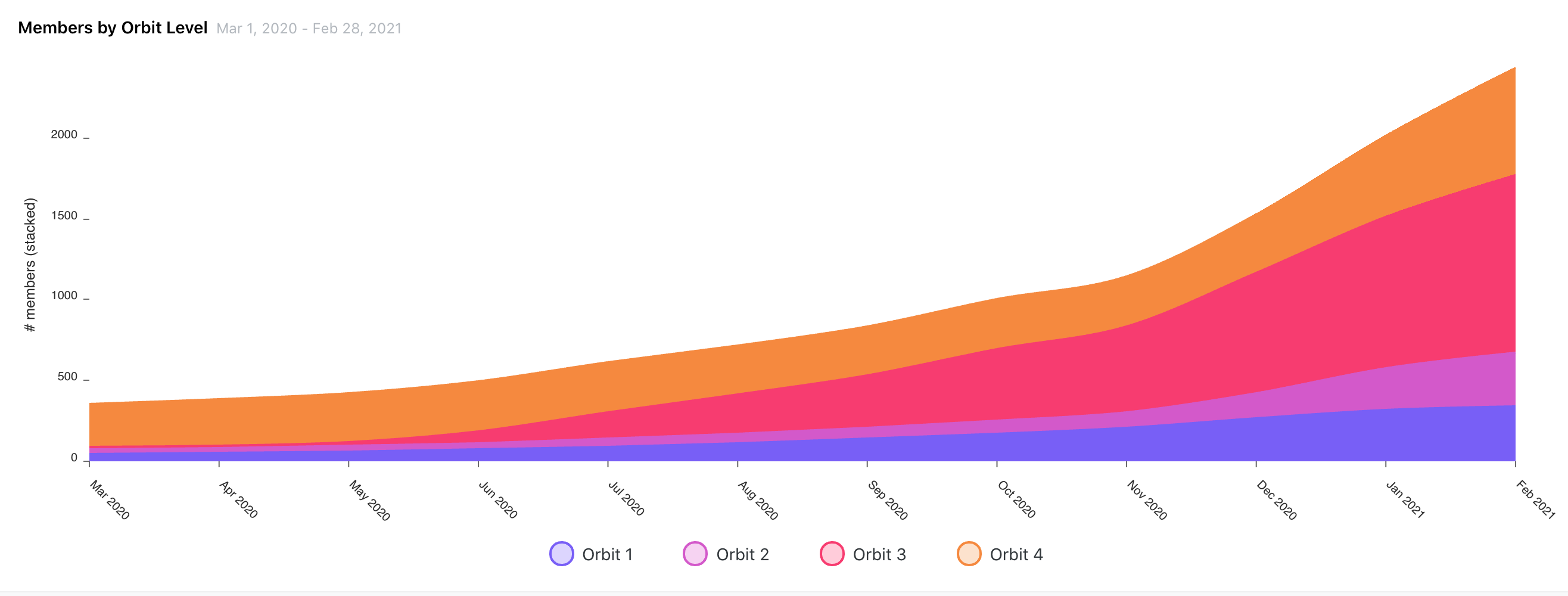
If you’re building a community around a product, a casual vibe is fine for a while, and it’s good to lean into general excitement about the early stages of a product and idea. But it’s essential to build on the momentum and to sustain it over time.
Not only will the frequent community input influence your product roadmap, but the conversations about your product can serve as the seed for building an active community.
If you can work with your early adopters to define and solve problems together, you can kickstart the conversation and begin transforming your audience into a community. If you’re doing things right, that’ll happen naturally.
Let conversations expand organically, but plant the seeds yourself
As users started building stuff on top of our API and with our Zapier app, we created a show-and-tell channel to share and discuss all the cool stuff they were making. This gave members a chance to talk to each other and share ideas.
Nico shared zaps he'd built, David shared his node-red flows, and Tanay shipped a node for Orbit on n8n, then wrote this amazing article about community metrics.
But we didn’t create the channel and then just cross our fingers and hope cool stuff would happen. Instead, we coupled organic interest with the intentional kickstarting of activity.
Here’s what I mean: before we created the channel, folks would share their creations with me directly via DM. That was amazing, but this approach didn’t help others in the community, since the conversation was 1:1 in private.
After that happened a few times, I proposed a new channel:

We didn’t try to force the community’s hand. In other words, the official #show-and-tell channel was built on organic momentum. By the time we made the channel, we knew there was interest in discussing and sharing custom integrations and workflows.
But we didn’t leave it all to chance. In addition to leaning into the momentum, we also jump-started the conversation by posting the very first set of guides for using Orbit's Zapier app to connect to things like Eventbrite and Slack (this was well before the release of our official Slack Integration).
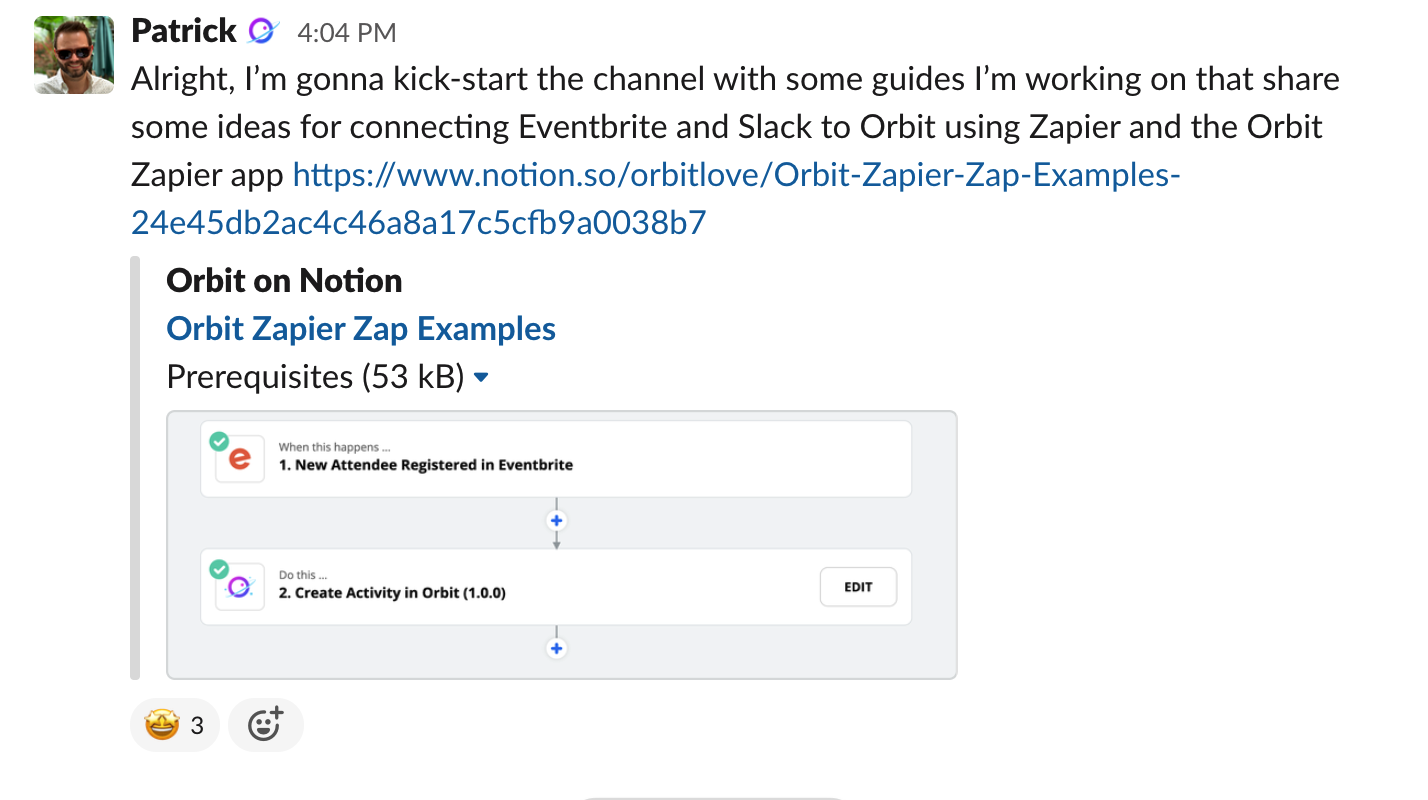
In any early-stage community, it’s incumbent on the organizers to help get the conversation going, in the same way a dinner party host makes introductions and suggests topics that’ll be interesting to the group.
In this case, we created the new space based on existing interest and momentum, invited the community in, then set the performative example for the new channel.
Overall, if your community is interested in leveling-up their skills and expertise around a product, show-and-tell channels are a great way to facilitate and encourage many-to-many conversations, as members share ideas and workflows with one another.
But we saw an organic increase in non-product conversations as well.
By the time we hit ~100 members in Slack, channels like #random and #book-club started to appear organically, created by the members. Folks started discussing Nadia Eghbal’s fantastic book, Working in Public, as well as sharing tweets and memes and various esoteric items with each other, such as the fact that K-pop group LOOΠΔ calls their fans “Orbits.”
To us, these new conversations felt like a new stage of the Orbit community, and marked a key shift from one-to-many conversations to many-to-many. Our audience was really starting to become a community.
Here you can see the growth in activity in channels over 2020, including the show-and-tell channel, random, and book club, as well as a pickup in the new #integration-slack channel later in the year, where we worked with a subset of the community on developing that part of the product.
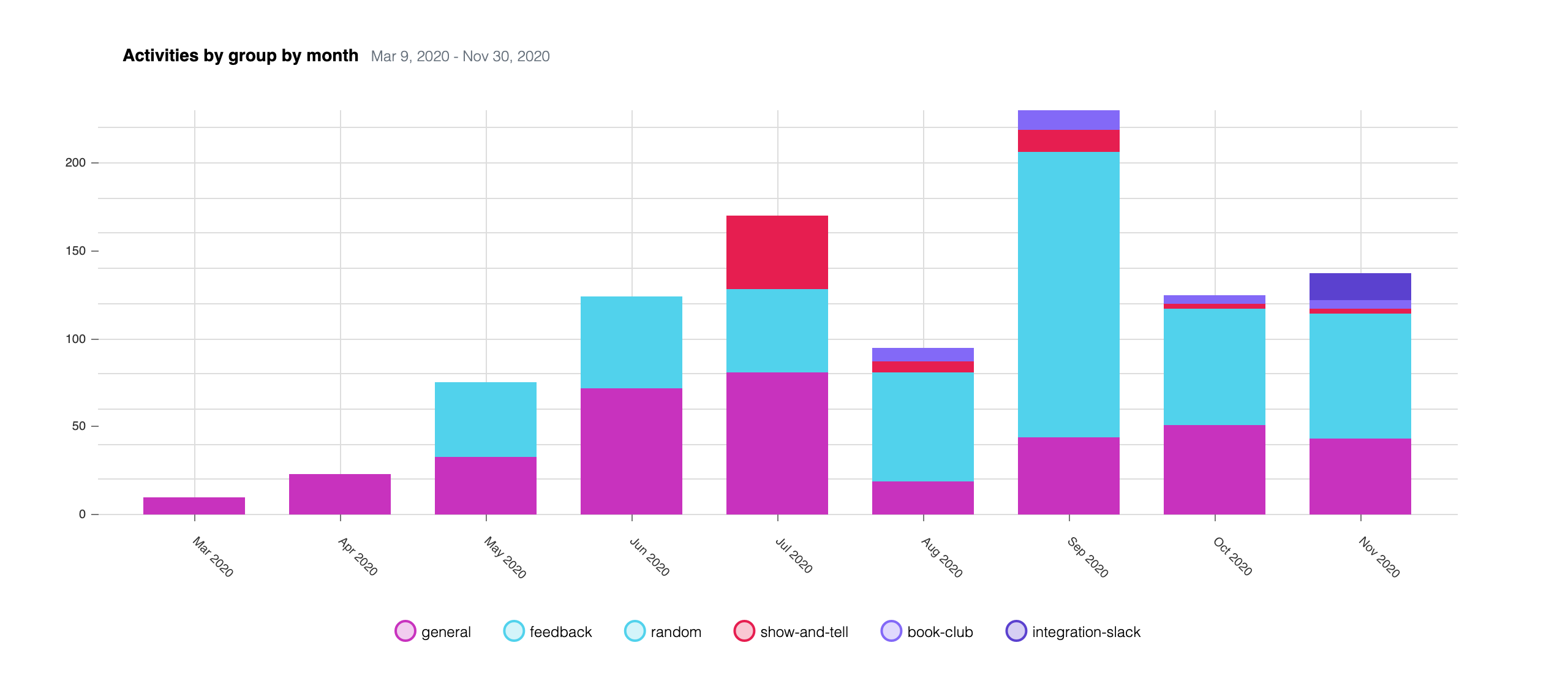
Host events to facilitate connections
So many early-stage community leaders ask me about this tipping point. Conversations in the early days of product- or company-centric communities are inevitably characterized by community members asking the founders about the product.
But thriving communities somehow transition to more a diversified cadence involving lots of folks across the community. So how can you facilitate this transition?
In my experience, creating a sense of psychological safety is key to facilitating many-to-many conversations.
One great way to do that is to help members feel like they know who’s on the other side of those usernames in Slack, and that those people are generally nice.
And one great way to do that is to host events that give members facetime with each other.

Our event series was called OpenSnack. Since I’m based in San Francisco and Josh is based in Paris, a happy hour didn’t make sense, so we leaned into the idea of community snacktime, and asked folks to bring their favorite snack for show-and-tell.
Pro tip: you don’t need hundreds of attendees for a successful event.
About a dozen folks came to the inaugural event, and while that number may seem small, everyone came away with a deeper understanding of every other person on the call.
It also created some goofy memories for us to recall together, like when Josh held his fancy French pastry up (a mille-feuille) to the webcam only for it to slide dramatically off the plate and onto the floor. Or when Ben shared his Buffalo Wing Cheez-its, as a hilarious foil to Josh’s pastry.
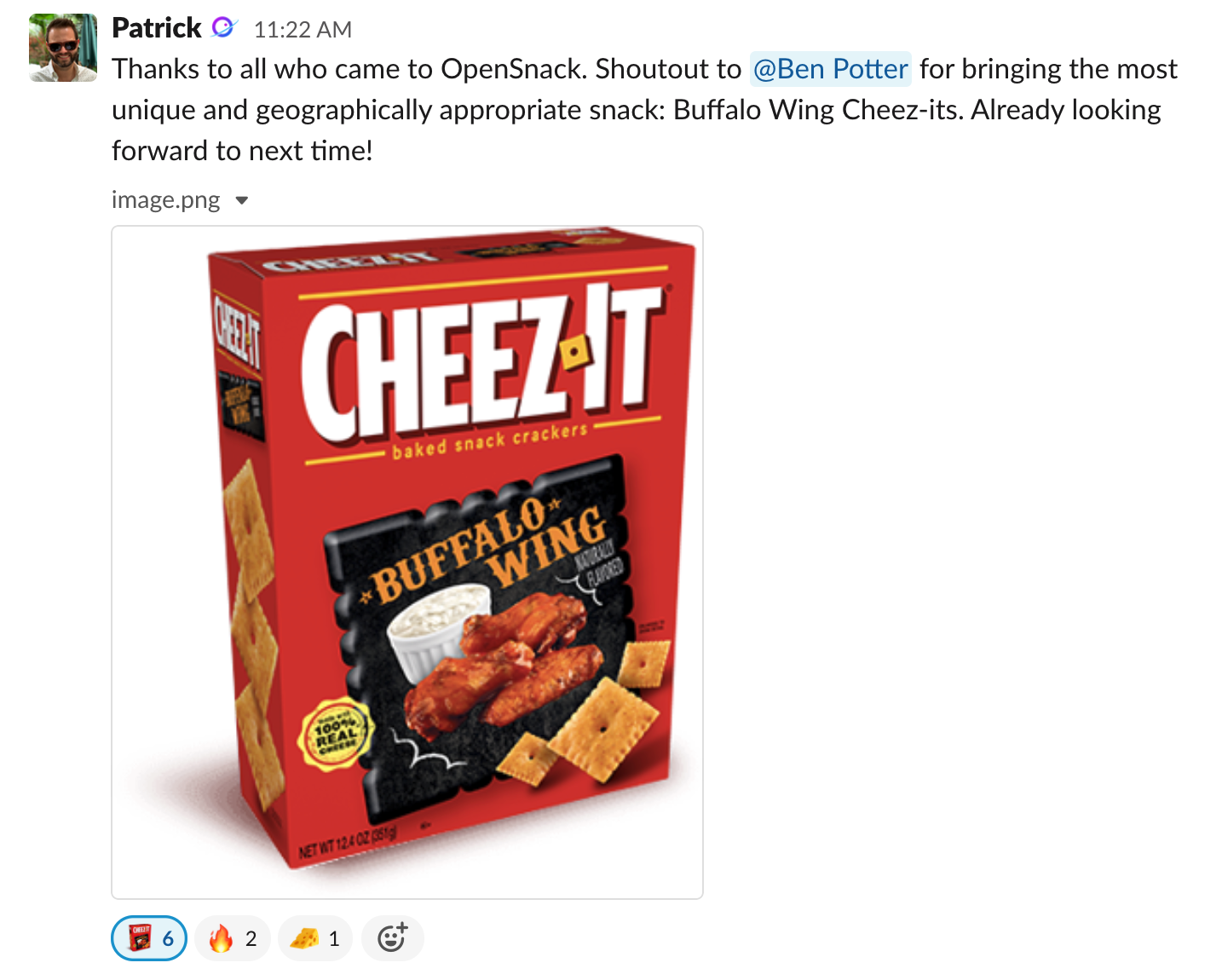
Later, when we announced our Seed Funding, we actually shared the news with our community first during a special edition of OpenSnack. Ahead of the call, we sent registrants a $25 gift card to a food delivery app as a way to share the celebration with the community — a virtual “snacks on us,” if you will.
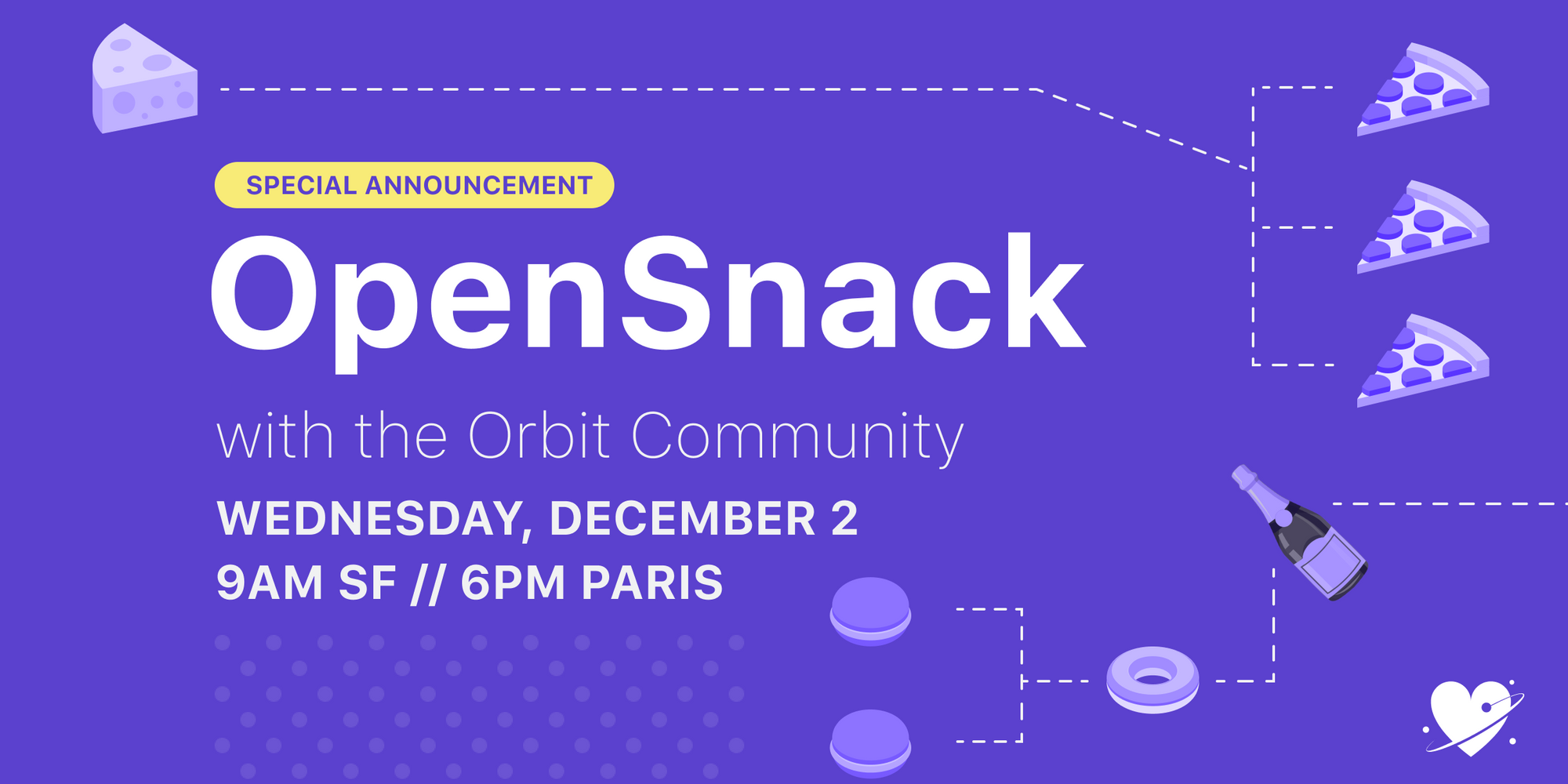
So not only did OpenSnack give our community members a chance to put faces with names, it helped create norms and rituals for our community.
If I had to start over, I’d definitely do more events, and start sooner. I think we would’ve learned more and faster, and generally would’ve accelerated the number of quality connections between our members.
Tactically, we've used Luma to create registration pages and connected Luma to Orbit via Zapier to create activities and tags for each member who registers, making it a snap to see who's attended any of our events from inside of Orbit.
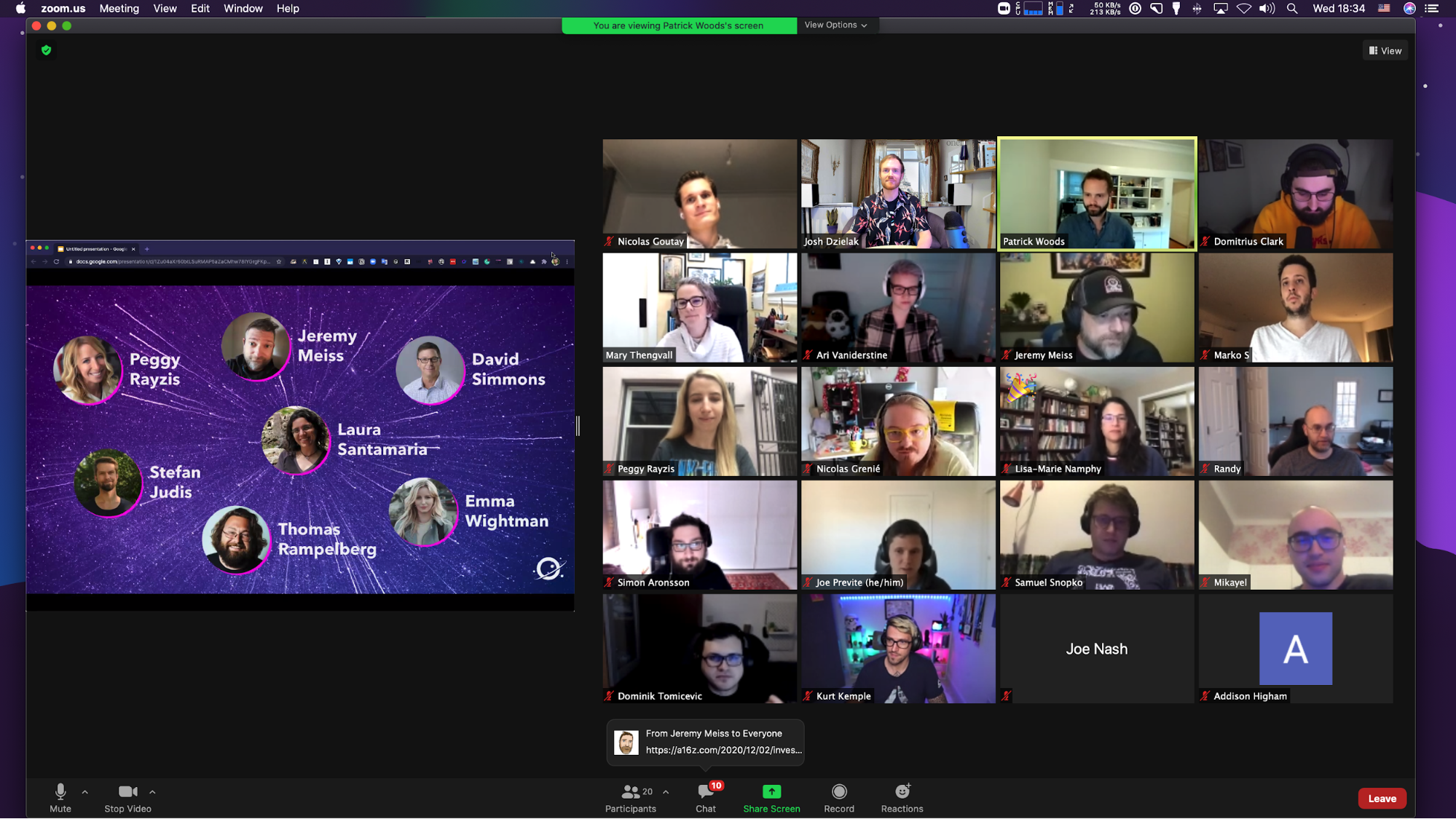
Create rituals
Several rituals emerged in our early community. First, our team got in the habit of sharing new things shipped in #general on Fridays. This contributed to a sense of momentum and progress. We also tagged folks who suggested the feature, gave feedback, or reported the bugs we'd smashed, giving us a chance to recognize and thank the folks who took the time to share their ideas or frustrations.
We also created a set of Orbit-branded emojis that allowed our community to react in especially Orbity ways. These were a big hit, so much so that members asked for the source files to use in other communities (grab them here).

The authors of Get Together point out that, “Another way that people bond over their shared identity is by creating language unique to their community.”
Custom emoji may sound silly, but in Slack communities, emojis are used all the time, so I think they’re a subtle but powerful way to impart a sense of belonging among members through a kind of shared language.
In fact, our custom emojis were such a hit that they played a part in a key community milestone.
When we hit 100 members in Slack, we commemorated the moment with a limited-run sticker. And what better way to celebrate the moment than with a real-life Orbit-branded 💯 emoji?
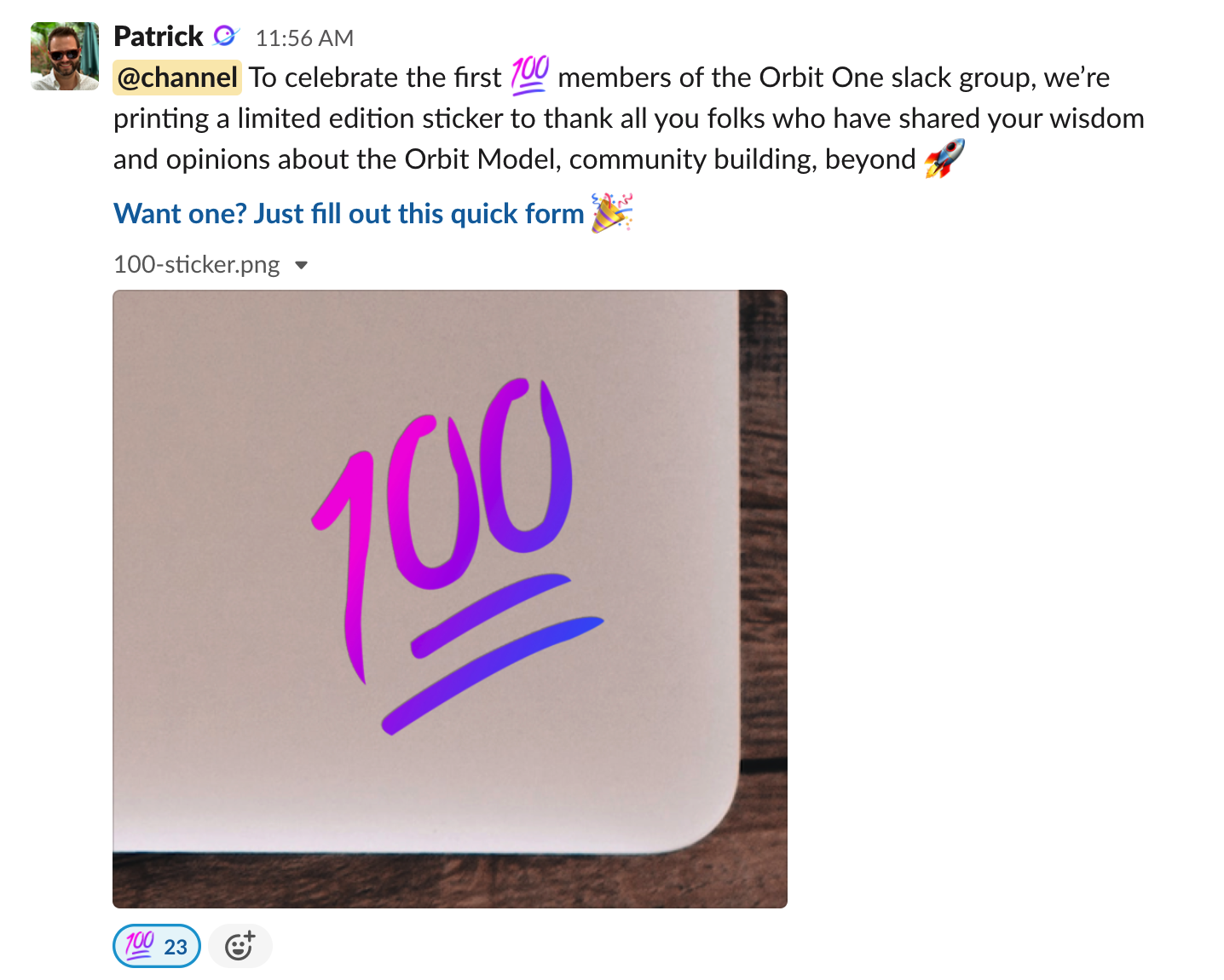
As it turns out, people like stickers:

For sticker fulfillment, we used a Typeform to gather mailing info, then connected the Typeform to Orbit to keep track of who requested a sticker.
For another example of limited-edition stickers, check out how we used a custom-designed sticker to incentivize members to move with us from Slack to Discord.
Building our community of community builders
I 💜 the Orbit community. Folks are super smart, helpful, and quirky. They support each other, share ideas, and provide us with loads of useful input for the product in particular and community building in general.
Tactically, the current iteration of the Orbit community involves our migration from Slack to Discord, picking up the pace of events, broadening the conversation beyond only Orbit users, and more.
Just like you, we’re just getting started, and have plenty more to learn. Every community is different, but I hope the ideas and experiences shared here are useful to you as you build and scale a community of your own.
Have questions or ideas about this post? Chime-in on this Twitter thread.
You might also like:
- Why Orbit is Better Than Funnel for Developer Relations
- DevRel teams need tools and models created specifically for our discipline, and not just those adopted from other fields.
- Slack vs Discord vs Discourse: The best tool for your community
- An in-depth comparison of 3 top community platforms across dozens of factors.
- How we use Orbit to build Orbit
- A guide to how we use our product to build our community.

